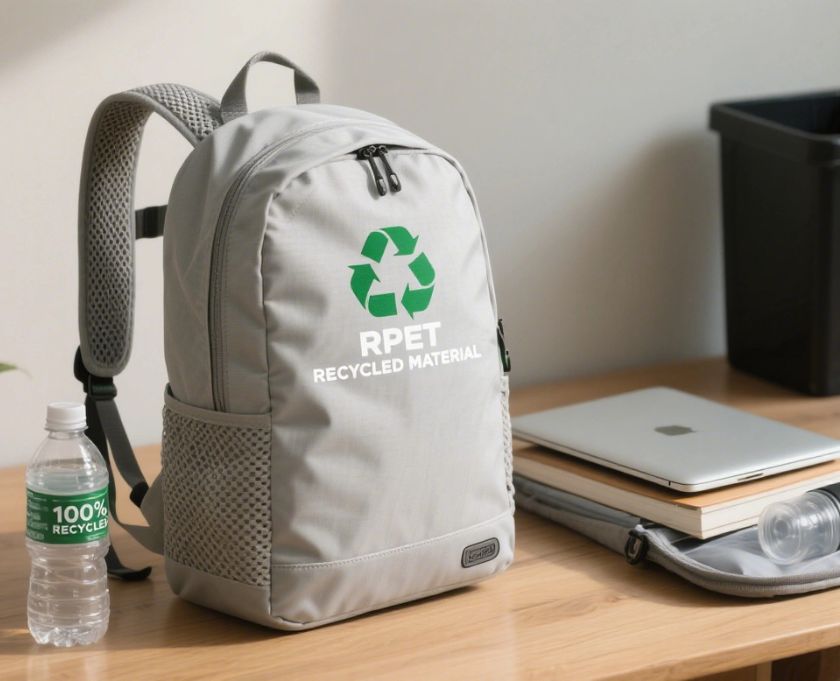Beautiful Plants For Your Interior

Eco-conscious living is no longer a trend—it’s a necessity. That’s why eco-friendly RPET backpacks pros and cons are a hot topic in 2025. These backpacks combine sustainability, durability, and modern design.
What Is RPET Material?
How RPET Is Made
RPET (Recycled Polyethylene Terephthalate) is created by recycling plastic bottles into fibers, woven into durable fabric.
RPET vs. Traditional Polyester
- RPET: Made from recycled plastics, eco-friendly.
- Polyester: Made from virgin petroleum-based materials.
Pros of Eco-Friendly RPET Backpacks
Environmentally Sustainable
Reduces plastic waste and carbon footprint.
Lightweight and Comfortable
Ideal for students and professionals.
Durable and Tear-Resistant
Strong enough for daily use and travel.
Stylish and Modern Design Options
Brands now offer RPET in trendy colors and sleek shapes.
Cons of Eco-Friendly RPET Backpacks
Higher Price Compared to Regular Polyester
Eco materials often cost more.
Limited Availability in Some Regions
Not all retailers stock RPET backpacks.
Waterproofing May Be Less Effective
Requires coatings for full rain protection.
Best Use Cases for RPET Backpacks
Students and Daily Commuters
Lightweight, stylish, and practical.
Business Professionals and Travelers
Professional look with eco credentials.
Outdoor and Eco-Friendly Enthusiasts
Perfect for those who value sustainability.
Top 8 Recommended RPET Backpacks in 2025
- Samsonite EcoRpet Business Backpack — Premium professional design
- Targus Cypress EcoSmart — Affordable and TSA-approved
- Herschel Eco Collection Daypack — Trendy and student-friendly
- The North Face Borealis RPET Edition — Durable with outdoor appeal
- Mark Ryden Urban Eco Backpack — Sleek, tech-ready urban style
- Thule Subterra EcoSmart Backpack — Rugged with eco-conscious build
- Patagonia Arbor RPET Backpack — Eco leader in outdoor gear
- XD Design Bobby Eco Backpack — Anti-theft + sustainable
Comparison Table: RPET vs Traditional Polyester Backpacks
| Feature | RPET Backpack | Polyester Backpack |
|---|---|---|
| Environmental Impact | Eco-friendly, recycled | Petroleum-based, less green |
| Durability | High | High |
| Weight | Lightweight | Lightweight |
| Waterproofing | Moderate, coating needed | Stronger with coating |
| Price | Higher | More affordable |
| Best For | Eco-conscious consumers | Budget buyers |
Common Mistakes When Buying RPET Backpacks
- Assuming all RPET is waterproof
- Ignoring size and laptop compatibility
- Choosing style over ergonomics
- Not verifying brand authenticity
Maintenance Tips for RPET Backpacks
- Wipe clean with a damp cloth
- Avoid harsh detergents
- Air-dry to maintain shape
- Reapply waterproof coating as needed
Frequently Asked Questions (FAQs)
Q1: Is RPET really eco-friendly?
A: Yes, it reduces plastic waste and lowers emissions.
Q2: Are RPET backpacks durable?
A: Absolutely—comparable to polyester.
Q3: Do RPET backpacks cost more?
A: Slightly, due to recycling processes.
Q4: Can RPET backpacks be fully waterproof?
A: Yes, if treated with PU or TPU coatings.
Q5: Is RPET safe for daily use?
A: Completely safe; tested for consumer standards.
Conclusion: Should You Choose an RPET Backpack in 2025?
This eco-friendly RPET backpacks pros and cons analysis shows that RPET offers the perfect blend of sustainability, durability, and modern style. If you want a bag that supports the planet and your lifestyle, RPET is the smart choice.